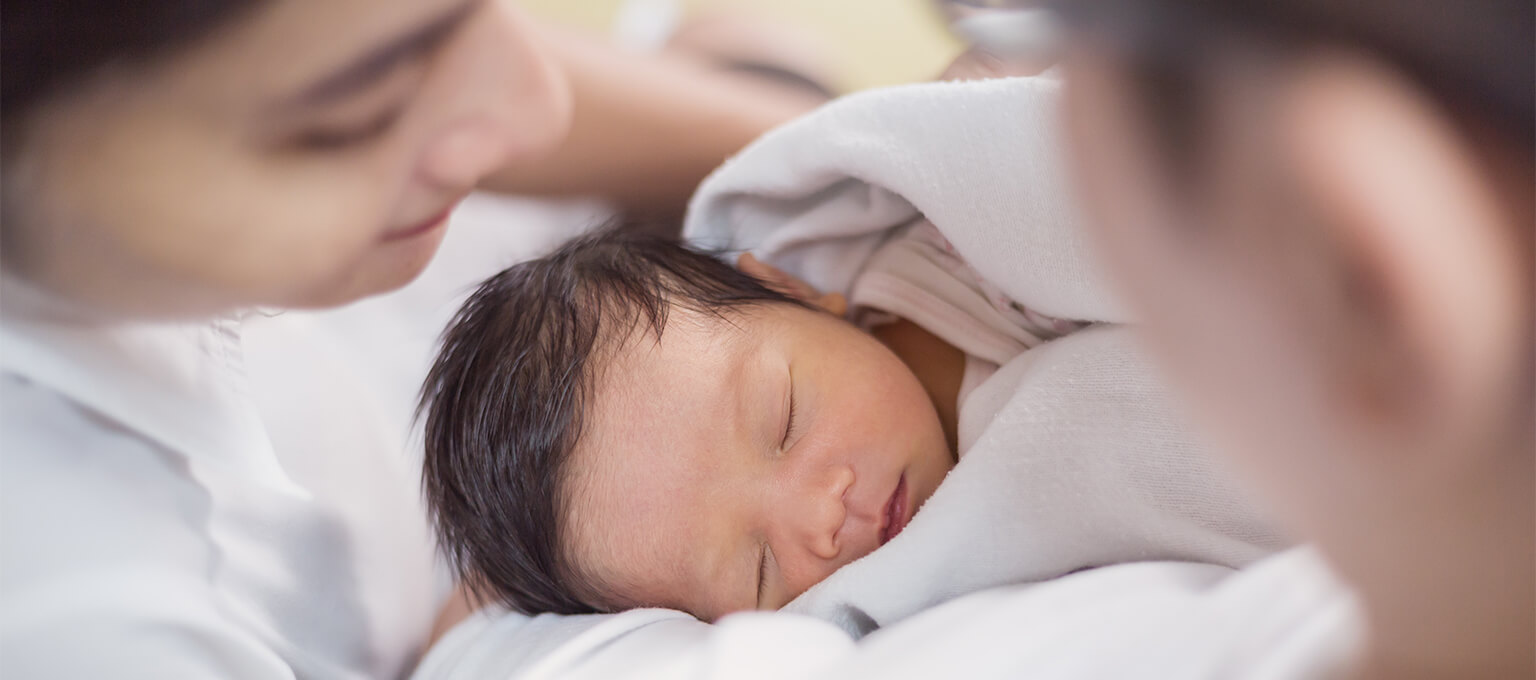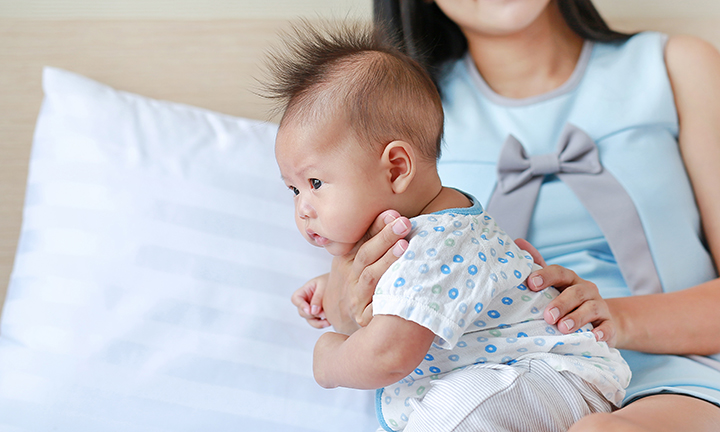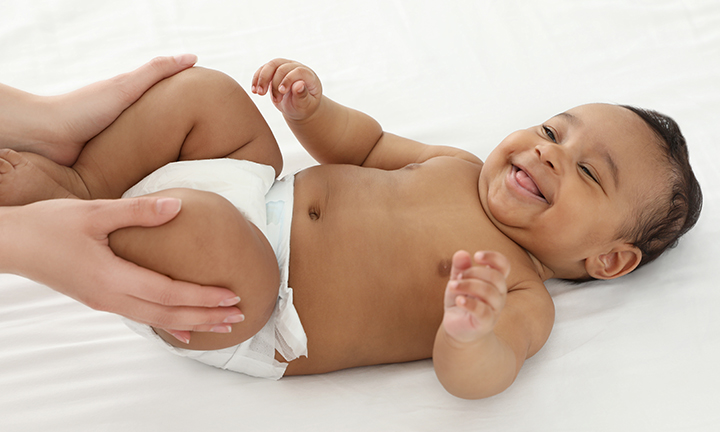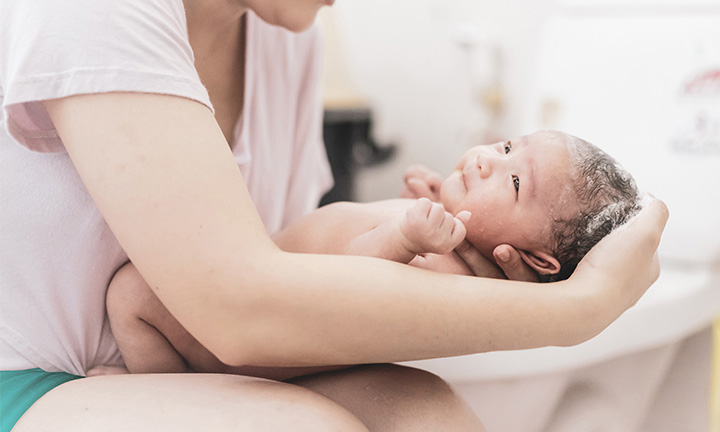
Oral Thrush in Babies
If your baby seems restless or uncomfortable when feeding, take a look in his or mouth. White patches on the tongue, or anywhere else in the mouth or throat, could mean that a common fungal infection called oral thrush has taken hold.
But what exactly is oral thrush? Read on to learn more about oral thrush and what might cause it in your newborn or young baby. Plus, discover the symptoms and treatment options, as well as how oral thrush might affect you if you’re breastfeeding.
What Is Oral Thrush?
Oral thrush (Oral Candidiasis) is a fungal infection of the mouth that can affect anyone at any age, but it’s especially common in newborns and small babies.
The fungus that causes thrush is a kind of yeast called candida that can live anywhere on the body, including in the mouth and digestive tract. It’s common for people to carry this yeast, and it doesn’t usually cause any problems.
If the fungus grows out of control in your baby’s mouth, it can develop into oral thrush, which may cause sore patches on the tongue or elsewhere in or around his or her mouth. These may be uncomfortable or painful for your little one, especially when feeding.
Thrush may also be transferred from your baby’s mouth to your nipples if you breastfeed, which can cause you pain or discomfort, particularly when your baby is feeding.
What Causes Oral Thrush in Babies?
There’s a good chance that your baby has already come into contact with the candida fungus. For example, it can be transferred in saliva through hand-to-mouth contact, or your baby might have picked it up while in the birth canal if you gave birth vaginally.
Most of the time, the presence of candida isn’t a problem, as it’s kept in check by your baby’s immune system and ‘good bacteria’.
But if your baby is newborn or still very young, his or her immune system isn’t fully developed yet. This ‘weaker’ immune system can also result in an overgrowth of candida, causing oral thrush in your baby.
If your baby is being given antibiotics for an infection, this might also increase the risk of thrush because antibiotics — which are great at fighting bacterial infections — can also kill off some of those ‘good bacteria’ at the same time. This means your baby’s natural defences against the candida are down, allowing the fungus to grow out of hand.
Symptoms of Oral Thrush in Babies
If you suspect your baby has oral thrush, it’s important to see your doctor as soon as possible to get a diagnosis and treatment. Here are some signs and symptoms of oral thrush to watch out for:
Difficulties with feeding. One of the first possible signs of oral thrush that you notice could be that your baby isn’t feeding as well as usual or seems to be finding it uncomfortable or painful.
White patches. These spots can appear on your baby’s tongue, lips, gums, inside the cheeks or on the roof of the mouth. Try wiping them gently away — if they can’t be removed this way, your child might have oral thrush. Because these patches aren’t always obvious from the outside, it’s a good idea to check your baby’s mouth from time to time.
Cracked skin at the corners of the mouth.
Persistent nappy rash. As the fungus is swallowed and passed out of your baby’s system, it can cause a nappy rash around your baby’s bottom. If your little one has a sore bum that doesn’t seem to want to clear up, look for other symptoms of thrush or talk to your doctor or health visitor.
Tell-tale signs on your own body. If you’re breastfeeding and have itchy, cracked or sore nipples, or intense shooting pains in the nipples or breasts, these symptoms could indicate that you have thrush. If you’re breastfeeding and your baby has oral thrush, the thrush can be passed between your infant’s mouth and your nipples.
How to Treat Oral Thrush in Your Baby
If you notice any possible symptoms of thrush in your baby or yourself, see your doctor as soon as possible to get a diagnosis. Your doctor will explain your treatment options.
Oral thrush in your baby is usually treated with an anti-fungal liquid or gel. If the infection has spread to your breasts you may be prescribed a cream to put on your nipples after feeds.
The symptoms of thrush usually start to get better within two or three days of treatment, although it will take a bit longer for the infection to clear up completely.
Check in with your doctor again if the symptoms haven’t improved after seven days.
How to Prevent Oral Thrush in Your Baby
These are some of the steps you can take to help prevent your baby from developing oral thrush:
Wash your baby’s hands frequently, especially if your child sucks his or her thumb or fingers. Wash your own hands frequently too.
Regularly sterilise dummies, teething rings, the nipples of feeding bottles and anything else that goes in your baby’s mouth, to prevent a build-up of the candida yeast that can cause oral thrush
Use a hot wash cycle for washing towels or clothing – especially breastfeeding bras – to kill off any yeast that they might have been in contact with
If you use a breast pump, make sure all the parts that come into contact with your breasts or breast milk are sterilised after every use
Keep your breasts dry and free of potential sources of yeast by changing any disposable breast pads frequently and wearing a clean bra every day
Preventing Reinfection
Thrush is highly infectious. The Candida fungus that causes it is easily transmitted, so it can spread from you to your baby and back again via your nipples, and even to and from other members of the family if you share bedding, cups or utensils.
This means Oral thrush in babies can be hard to get rid of, especially if you’re breastfeeding, but there’s lots you can do to help prevent reinfection.
First of all, it’s important to ensure that both you and your baby (and anyone else who has it in your household) are treated at the same time.
It also makes sense to take all the preventive measures above while treating an existing case of thrush.
You may need to throw away any expressed breast milk that you have in storage, if there’s a chance that it’s been contaminated with the yeast.
Breastfeeding and Thrush
If you’re breastfeeding your baby, thrush can be a real pain — often literally — for you, as well as for your baby.
It’s important to get prompt treatment, so see your doctor as soon as you can. Keep in mind that the symptoms of thrush may not clear up straight away.
In the meantime, experts advise that you keep on breastfeeding if you can. If you cut down on breastfeeding and make up the difference with formula, this can reduce your breast milk supply.
If it’s just too painful to breastfeed, you can still express your breast milk and give it to your little one as long as you don’t store or freeze any breast milk that you express while the thrush is being treated.
Check with your doctor or health visitor before taking any over-the-counter pain relief medicine.
Why It Might Not Be Thrush
Not all breast pain or nipple soreness is caused by thrush.
If you experience sharp pains in your breast during or after feeds and severe pains in the nipple, try changing your baby’s breastfeeding position or getting him or her to latch on again. This might be all that’s needed to help alleviate the pain you’re feeling.
Another cause of breast pain can be a bacterial infection called mastitis.
These conditions are commonly confused with thrush, so it’s always best to check with your doctor, who will be able to find the underlying cause of your discomfort.
FREQUENTLY ASKED QUESTIONS
Having a new baby can be unpredictable sometimes. One minute you’re basking in that first toothless smile, the next you’re trying to wipe away a white patch from the inside of your baby’s mouth.
Oral thrush can be one of those challenges that parenthood throws up from time to time, but with the treatment recommended or prescribed by your doctor it’ll clear up in due course.
The quicker you get started on that treatment, the sooner you and your baby will soon be back to enjoying those peaceful bonding moments when feeding your little one.
How we wrote this article
The information in this article is based on the expert advice found in trusted medical and government sources, such as the National Health Service (NHS). You can find a full list of sources used for this article below. The content on this page should not replace professional medical advice. Always consult medical professionals for full diagnosis and treatment.
Read more about Newborn Baby
Related Articles
Join Pampers Club and get:














